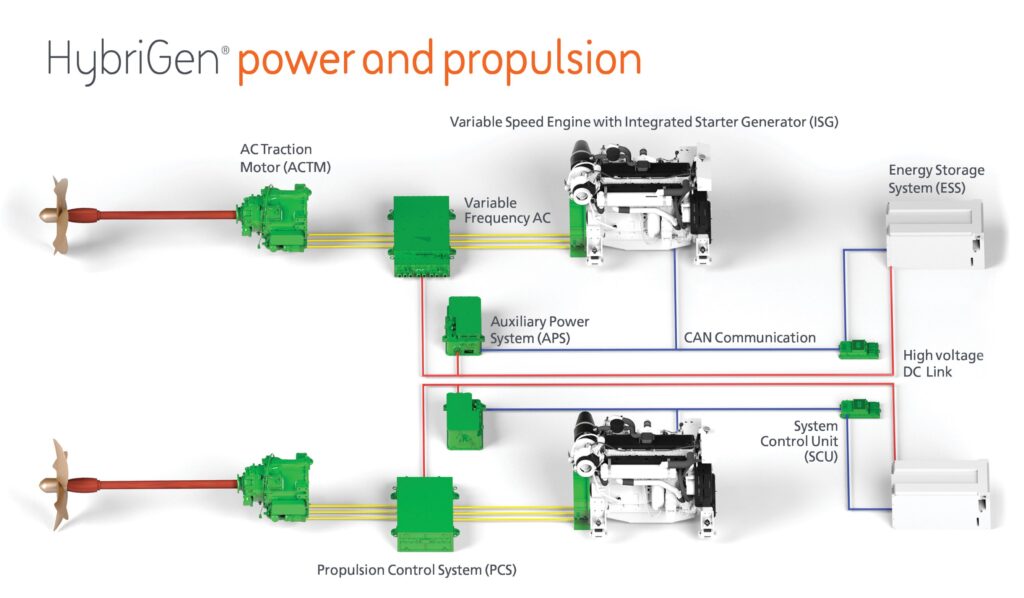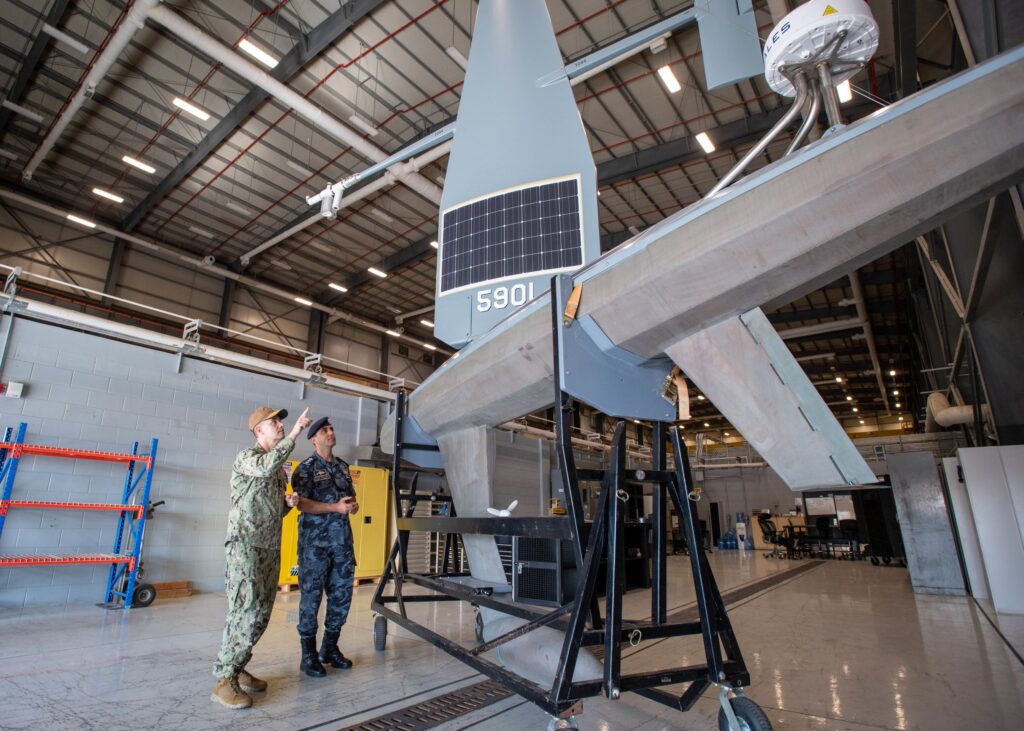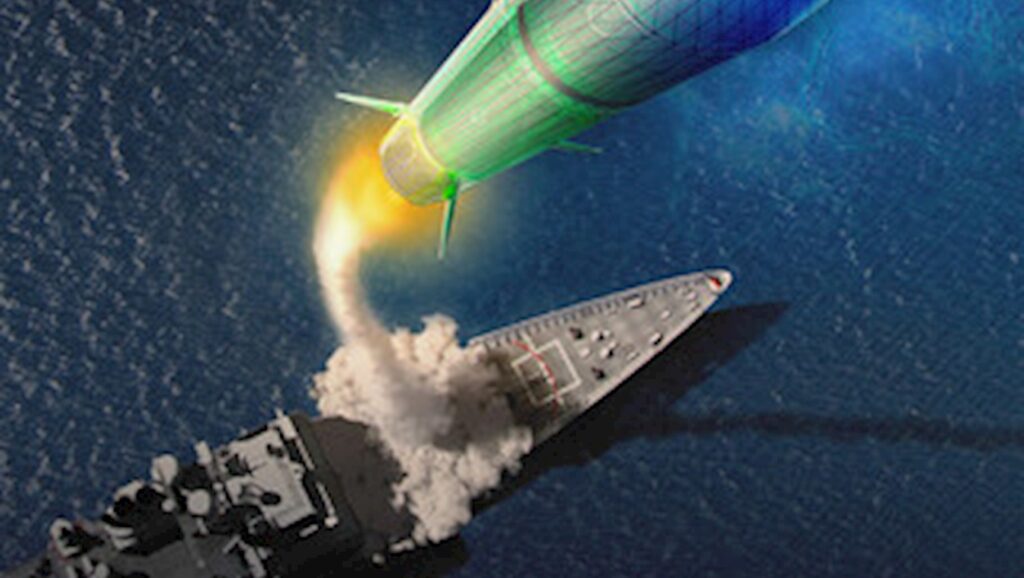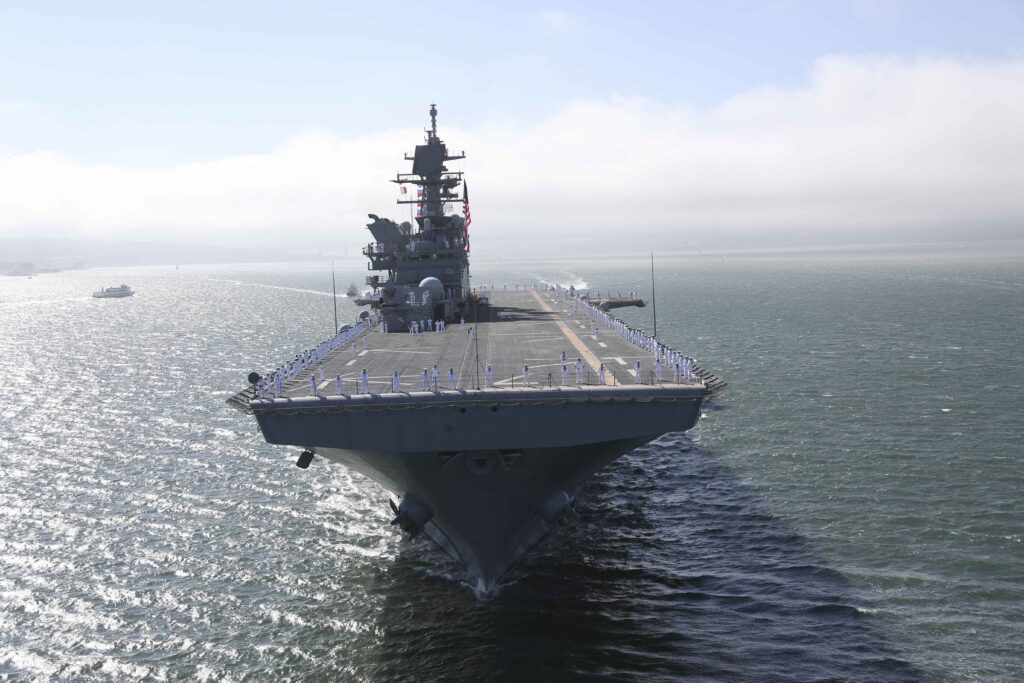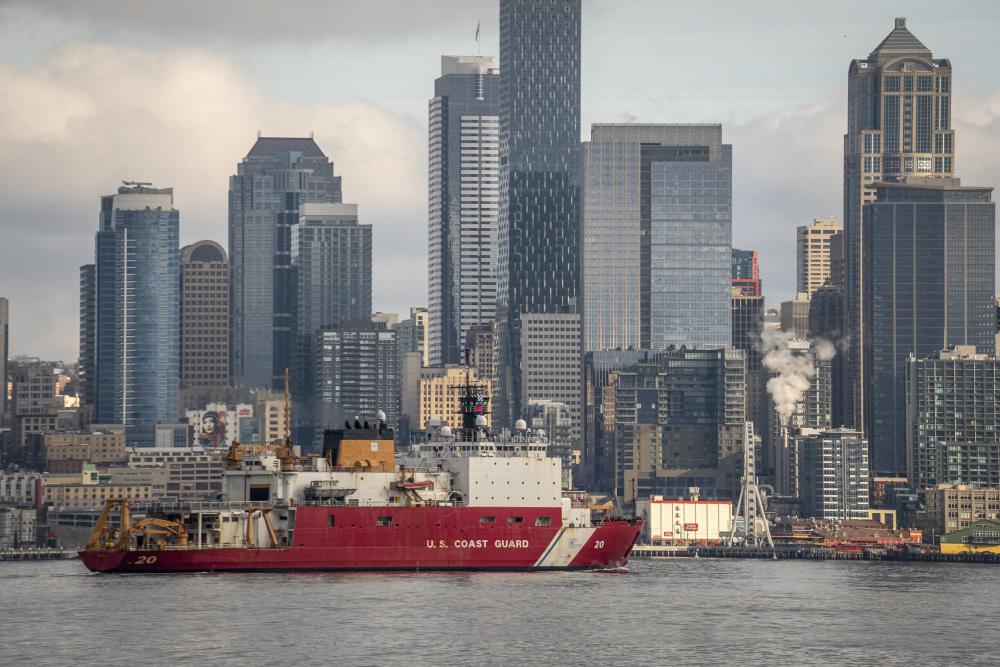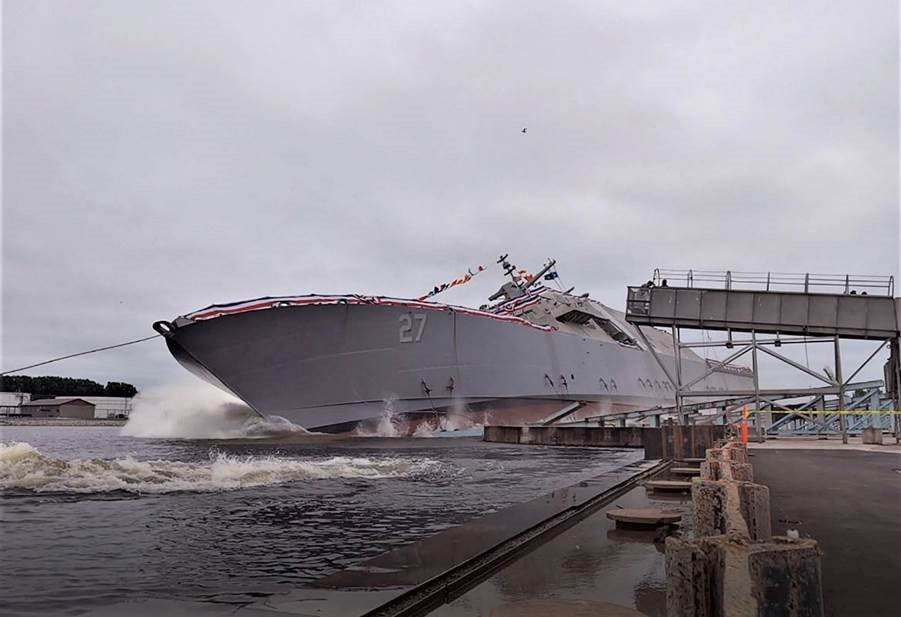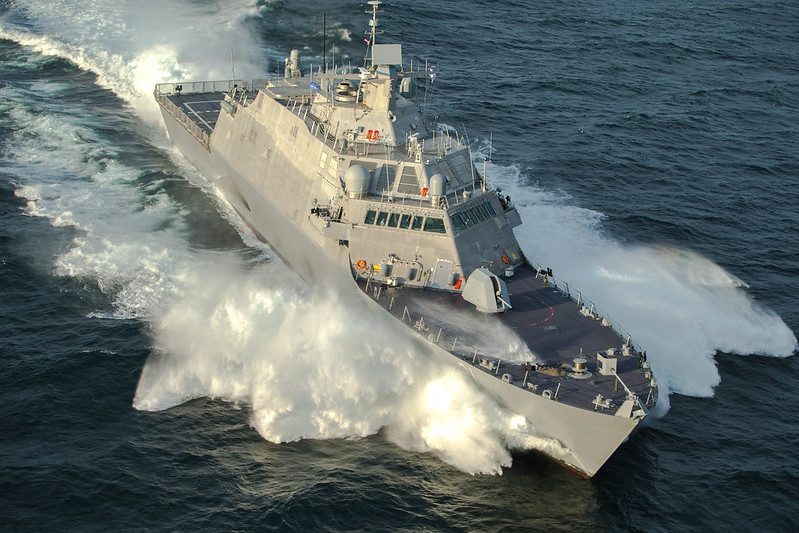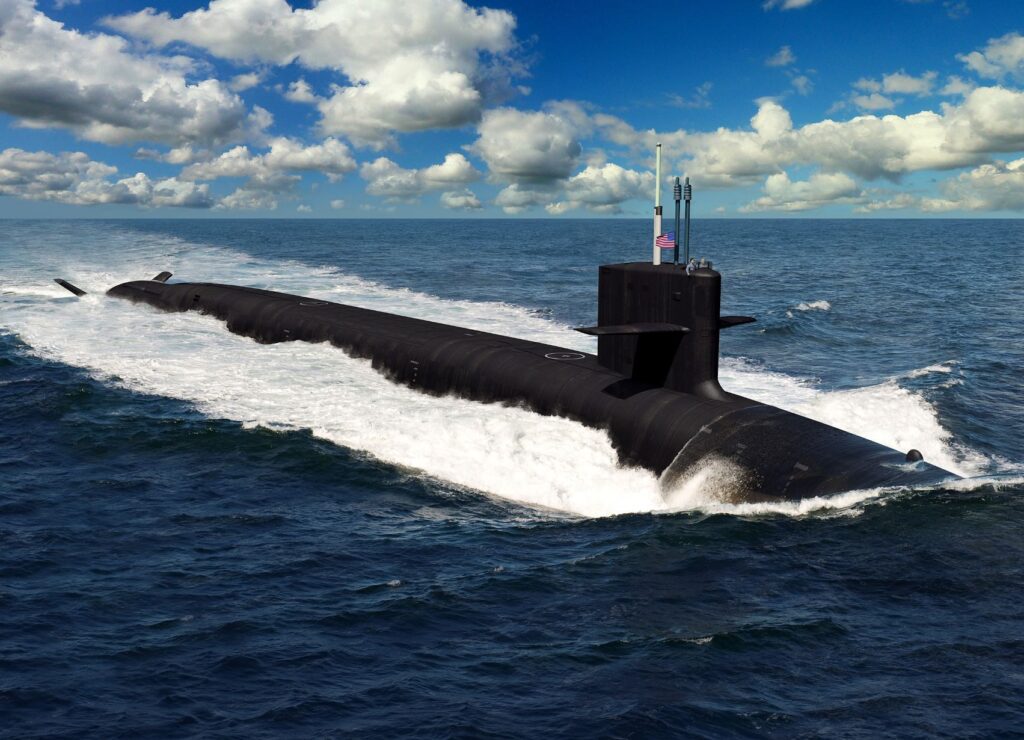Navy and Port of Hueneme Help Relieve U.S. Supply-Chain Congestion

PORT HUENEME, Calif. — The U.S. Navy in partnership with the Oxnard Harbor District (OHD) is providing resources onboard Port Hueneme in direct support of decreasing port congestion in Los Angeles County and reducing the national supply-chain shortage, Nov. 22, 2021.
A standing Joint Use Agreement (JUA) with Naval Base Ventura County and OHD, allows the Navy to support commercial supply chain logistics when activated.
“Naval Base Ventura County recently welcomed a large cargo vessel,” said Daniel J. Herrera, assistant program director for port operations, NBVC. “Ports of America already off-loaded a large number of 40-foot containers into lot 22 onboard Port Hueneme, which is merchandise expected to have direct impact with helping to support holiday supply demands.”
The Department of the Navy entered into a JUA in 2002 with the OHD, replacing the 1994 memorandum of understanding, authorizing commercial use of Wharf 3 onboard NBVC, including approximately 21 acres of contiguous land, buildings 546 and 548, and if available, up to an additional 10 acres of industrial land located outside of the Wharf 3 area.
Jason Hodge, President of the OHD which owns the Port of Hueneme, said commercial business at the port has increased significantly over the past year and when it comes to moving cargo, the Port’s flexible “can do” attitude is similar to the Navy Seabees’ “Can Do” motto of completing a task no matter the condition or situation.
“The port appreciates the partnership with NBVC and locating additional space to accommodate excess holiday shipments coming through the port,” Hodge said. “We are delighted to come together to meet the challenge of providing a solution to help keep essential goods moving. Our long-standing history of partnership continues with this call-to-action to address the national supply chain challenge.”
The JUA was activated in November as a resource to help reduce the shipping congestion affecting Los Angeles County’s major ports and contributing to the national supply crisis. Vessels would arrive into the port to unload a portion of their containers before continuing on to Los Angeles County or chose to unload all their containers at the Port of Hueneme to avoid the backlog of ships farther south.
